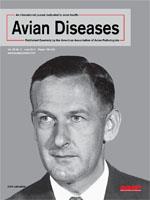During 2007, two outbreaks of avian influenza virus (AIV) in backyard and commercial ostrich flocks were first reported in the Kingdom of Saudi Arabia (KSA). The infected ostriches suffered from depression, anorexia, and diarrhea and some exhibited sudden death. A rapid AIV-group antigen detection and real-time reverse-transcription PCR (rtRT-PCR) were initially performed on cloacal and tracheal swabs collected from diseased birds. Pools from positive-tested swabs for each flock were utilized for virus isolation in specific-pathogen-free embryonating chicken eggs. H5N1 AIV was identified in the harvested allantoic fluids by hemagglutination followed by hemagglutination inhibition and rtRT-PCR. The viruses responsible for these two outbreaks were sequenced and characterized as HPAIV H5N1 (A/ostrich/Saudi Arabia/6732-3/2007 and A/ostrich/Saudi Arabia/3489-73VIR08/2007) from backyard and commercial flocks, respectively. Phylogenetic analysis of both isolates revealed that the two viruses belong to clade 2.2 sublineage II and cluster with the HPAIV H5N1 isolated from falcons and turkeys during 2007 in KSA.
Nota de Investigación—Caracterización y análisis filogenético de un virus altamente patógeno de influenza aviar H5N1 aislado de avestruces enfermas (Struthio camelus) en el Reino de Arabia Saudita.
Durante el año 2007, dos brotes del virus de la influenza aviar en parvadas de avestruces de traspatio y comerciales se reportaron por primera vez en el Reino de Arabia Saudita (KSA). Los avestruces infectados sufrieron depresión, anorexia y diarrea y algunos exhibieron muerte súbita. Inicialmente se realizaron una detección rápida por antígeno de grupo del virus de influenza y también un método de transcripción reversa y PCR en tiempo real (rtRT-PCR) a partir de hisopos cloacales y traqueales recolectados de las aves enfermas. Las muestras agrupadas de hisopos de cada parvada que resultaron positivas se utilizaron para el aislamiento del virus en huevos embrionados de pollo libres de agentes patógenos específicos. Se identificó un virus de influenza aviar subtipo H5N1 en los líquidos alantoideo cosechados mediante hemaglutinación seguido de inhibición de la hemaglutinación y rtRT-PCR. Los virus responsables de estos dos brotes fueron secuenciados y caracterizados como virus altamente patógenos subtipo H5N1 (A/avestruz/Arabia Saudita/6732-3/2007 y A/avestruz/Arabia Saudita/3489-73VIR08/2007) que se detectaron en parvadas de traspatio y comerciales, respectivamente. El análisis filogenético de las dos cepas reveló que los dos virus pertenecen al clado 2.2 sublinaje II y se agruparon con el virus de influenza de alta patogenicidad H5N1 aislado de halcones y pavos durante el año 2007 en el Reino de Arabia Saudita.





